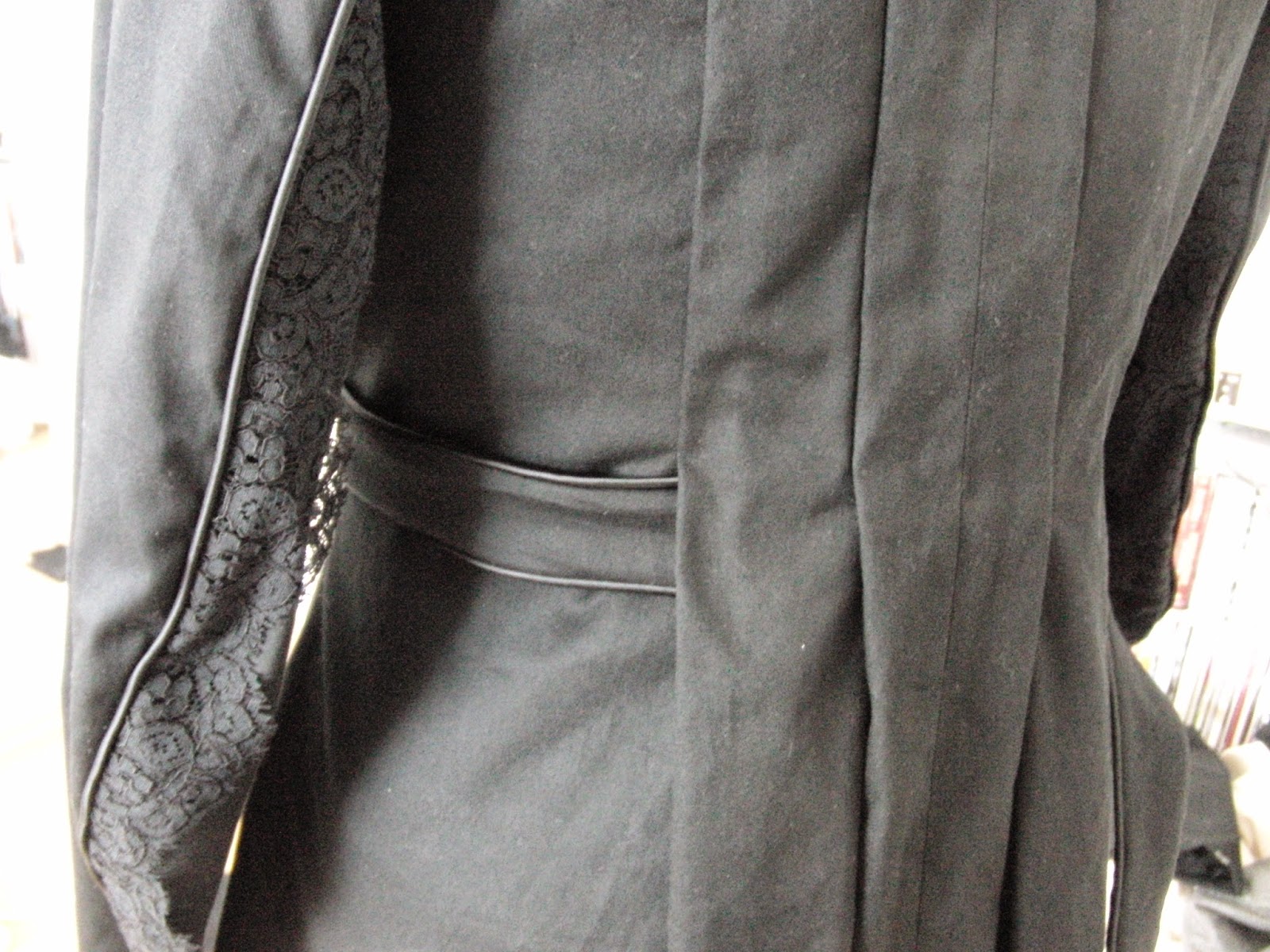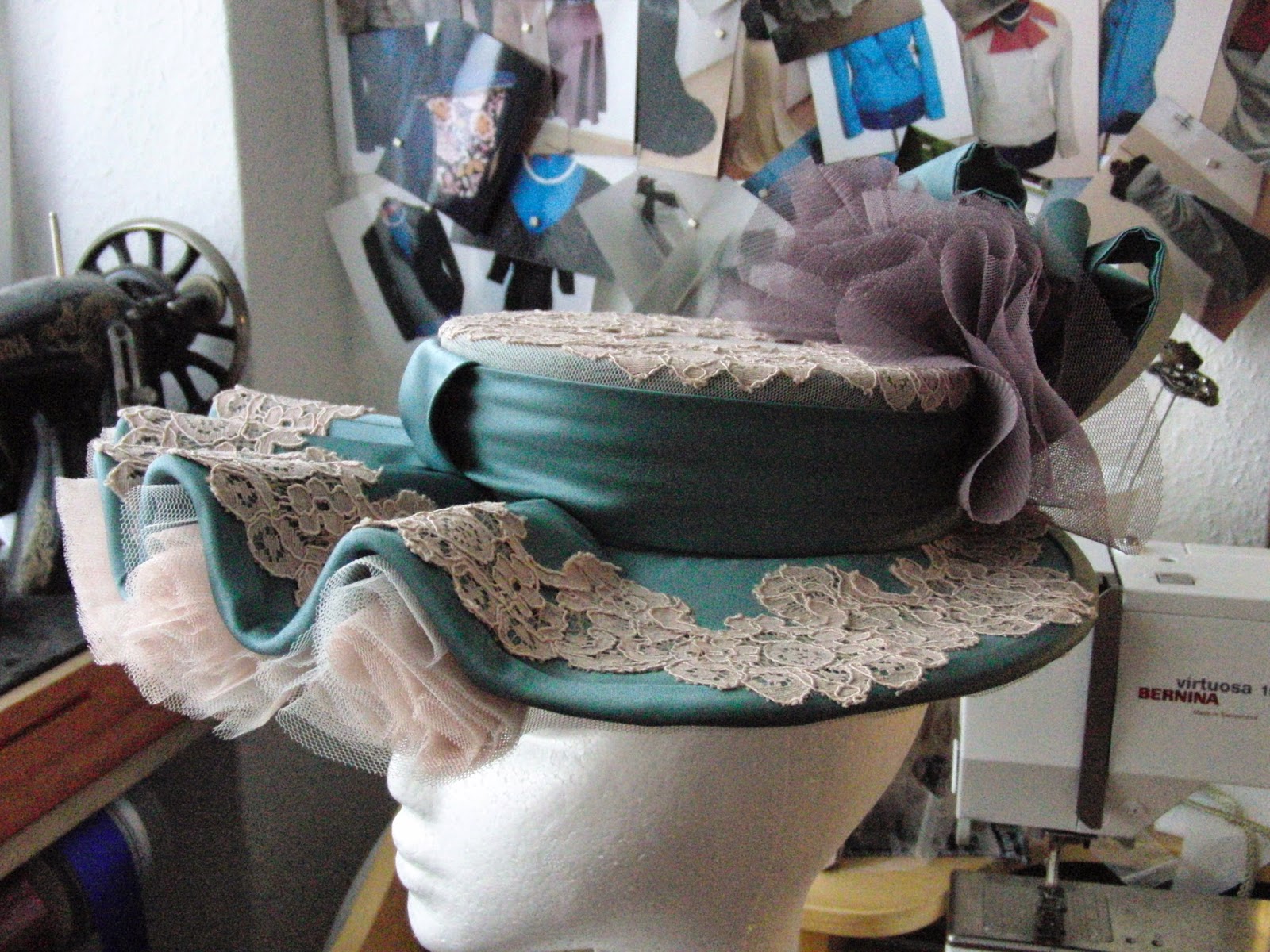I have finished my stays this morning! Before breakfast!
After a months break I finally added the lining and am now done with stays for the rest of this year.
Most likely...
 |
| 1776 Stays |
The lining is made from white cotton batiste. Every tab is lined separately to make it easier to remove and wash the lining after use. This way only the main piece has to be removed and relined and the fiddly tab part only has to be done once.
Of course I wouldn't do this without a test run on my precious test piece!!!

On this picture you can also see the horizontal boning. I used three strips of german fishbone instead of the four indicated in the pattern. There is additional boning over the shoulder blades, too.
 |
| Tab lining |
For the rest of the lining I used the pattern without the tabs and shoulder straps. The front and side seams are sewn by machine and then pressed. The seam allowance is 0,5cm and turned under before attaching the lining to the stays using ladder stitch.
This way I have a neat finish on the inside as well.
 |
| 1776 Stays |
The Challenge details!!!
Challenge #16 Terminology - pick an item from the The Great Historical Fashion & Textile Glossary
and make it.
My choice is a new pair of Stays lined in cotton Batiste
Fabric: Leftover scraps of cotton canvas, 0,5m cotton muslin, 0,25m cotton batiste, strips of silk
Pattern: Diderot's L`Encyclopédie "Tailleur de Corps"- Corsets and Crinolines p. 40
Year: 1776
Notions: polyester thread, german fishbone, spiral steel, flat steel
How historically accurate is it? Well, cotton is kind of OK for the late 18th C., but not with this print... Steel and plastic aren't good as well, so not too accurate material wise. Aside from most straight seams which were done by machine the construction is accurate and handsewn.
Hours to complete: I am guessing on approx. 50 hours
First worn: finished this morning, so not yet
Total cost: Difficult to say. Absolutely everything was stash material. If I bought them new the materials might have been about 50 - 60€
And now, wthout further ado:
PICTURES
 |
| 1776 Stays - front |
 |
| 1776 Stays - back |
 |
| 1776 Stays - side |
A Bonus Project
Now it sometimes happenes that I have the need to be super sustainable. My leftover scraps and silk bias had to be used up! Sraps are obviously not enough to make clothing... But I am only starting my 18th Century wardrobe and every lady needs a pocket, right? Usually these pockets would have extensive embroidery, but I am using my printed cotton.
Please don't look if you are looking for accuracy.
The pattern is taken from Linda Baumgarten's Costume Close-up.
These pocket is made from the exactly same layers of fabric like the stays above. One layer cotton canvas, two layers cotton muslin and cotton batiste for the back side. The edges are bound with silk bias strips. Compared to original examples I cheated with the contents;-)
I added an additional small pocket inside to make it easy to find *cough* todays necessities...

Now that I am done with this project I have to go fabric shopping. No fun this time, though... I was stupid enough to by the WRONG tulle for my new hat. Can you imagine?
Have a lovely weekend!!!






























































